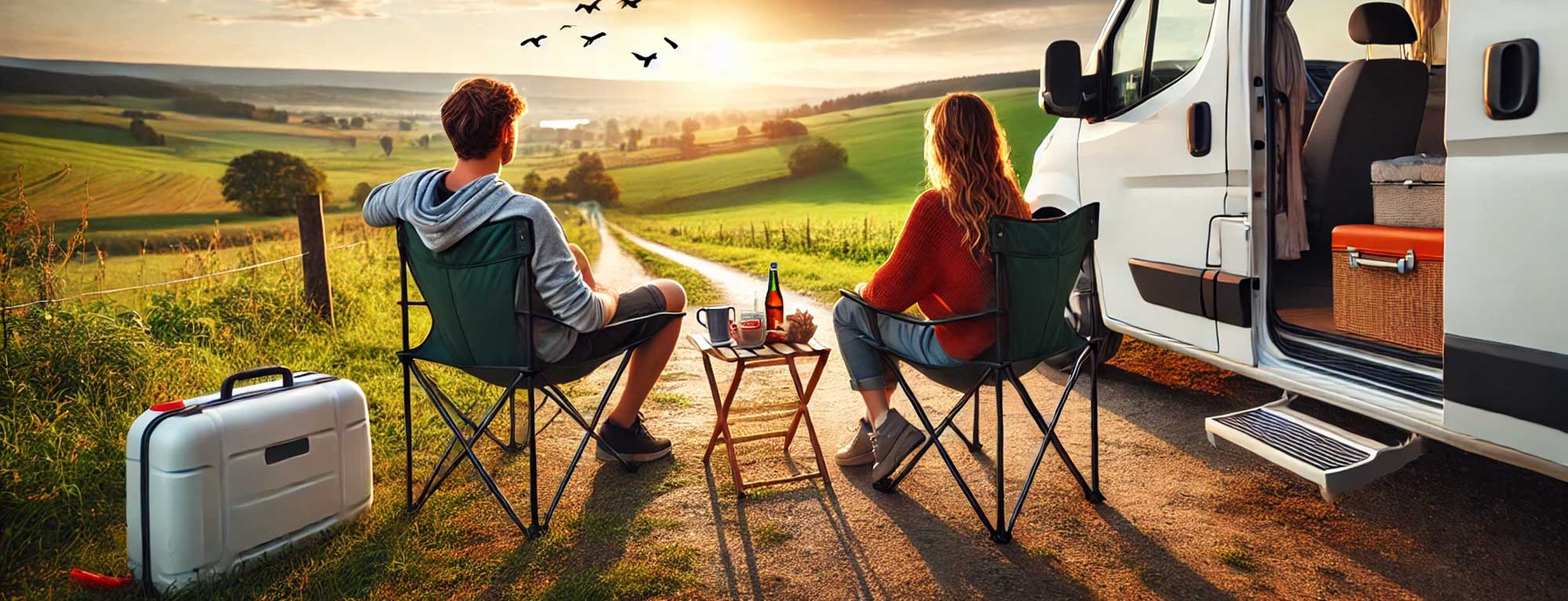Winterising Your Campervan
The air’s colder, the nights are longer, and that final autumn trip is behind you. Now what? If your campervan’s going into hibernation for the winter, it’s time to winterise properly. Skip this step, and you could be met with cracked pipes, dead batteries, mildew and regret come spring.
Winterising isn’t just for Arctic explorers; it’s for anyone who wants their camper to last. The cold creeps in, moisture builds up, and any corner not cared for becomes a breeding ground for damage. So, what exactly should you do?
Drain the Water System – Thoroughly
Frozen water expands. Pipes split. Tanks crack. And it all costs a small fortune to fix. So:
- Empty the fresh water tank.
- Drain the waste tank too.
- Run taps dry and leave them open.
- Don’t forget the showerhead and toilet flush.
- Blow out or sponge out any leftover water if possible.
Just imagine: someone skipped this, and by February, there was a small lake where the wardrobe used to be. Enough said.
Batteries and Electrics – Avoid That Dead Click
- Disconnect the leisure battery and store it in a dry, frost-free place.
- Use a trickle charger or smart charger to keep it topped up safely.
- Start the engine monthly if it’s safe to do so, or disconnect the vehicle battery too.
No one wants to climb into a frozen van in March, only to find the electrics as lifeless as last year’s novelty socks.
 Covered from bumper to awning – nothing can ruin our trip!
Covered from bumper to awning – nothing can ruin our trip!Stop Damp in Its Tracks
- Wipe everything down after your last trip, no crumbs, no damp towels, no half-used toiletries.
- Leave cupboards open to allow airflow.
- Use moisture traps or dehumidifier pots inside the van.
- Crack a roof vent slightly (if it’s secure) to let air circulate.
Mould has a talent for sneaking in when you least expect it, especially around window seals and mattresses. Prevention is far better than scrubbing.
Keep Pests Out
- Remove all food. Even the emergency chocolate bar.
- Check under seats and in drawers, no crumbs, no bin bags, no dog biscuits.
- Block off potential access points like vents or gaps in under-seat storage.
One winter, someone left a half-empty cereal box in a locker. By spring, a family of mice had moved in and redecorated. Don’t be that person.
Exterior Checks – Cover It or Clean It
- Give the van a good clean; especially underneath, where road salt can corrode.
- Wax the bodywork to protect the finish.
- Cover the tyres or move the van occasionally to prevent flat spots.
- Use a breathable cover if storing outdoors. Tarps trap moisture.
Gas and Heating
- Turn off the gas at the bottle.
- Disconnect cylinders if storing long-term - store them safely elsewhere.
- Make sure the heating system is drained if it's water-based (like Alde).
Final Touches
- Leave the fridge door ajar to prevent smells and mildew.
- Lift cushions off the floor or prop them vertically to help airflow.
- Lock up and double-check security, including steering lock, tracker, and wheel clamps.
Looking Ahead
When the frost lifts and spring appears, a properly winterised camper is a joy to return to. No foul smells, no split pipes, no headaches. Just turn the key, and off you go.
And one last thing; if anything does go wrong, or if you’re leaving the camper unattended for months, having proper cover is more important than ever. Consider getting a quote to make sure you’re fully protected whilst it’s off the road.


